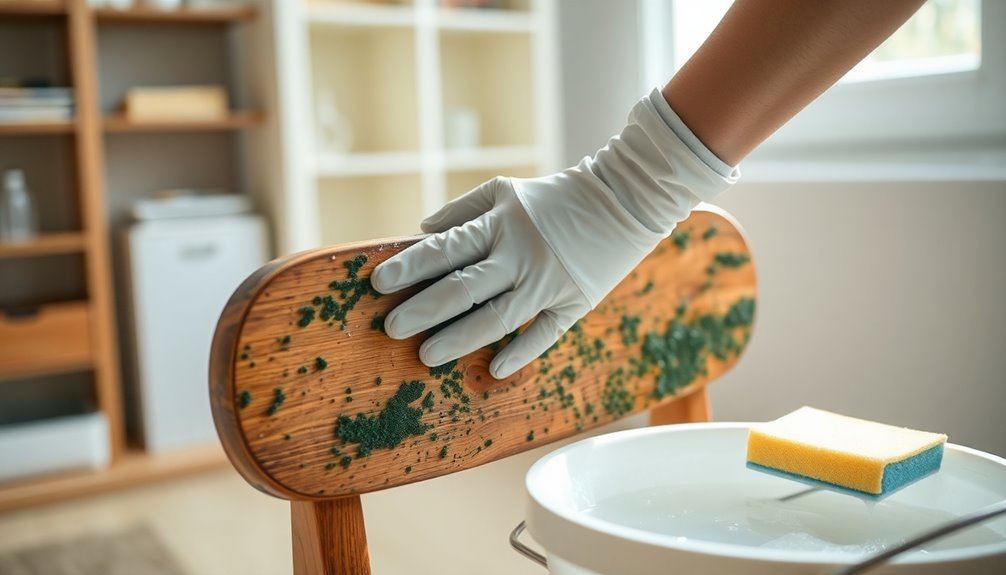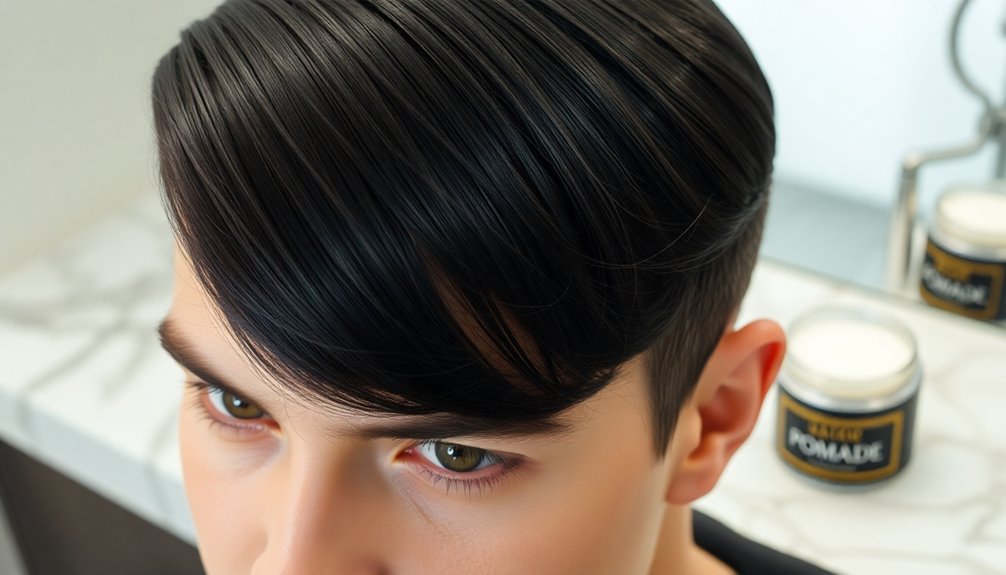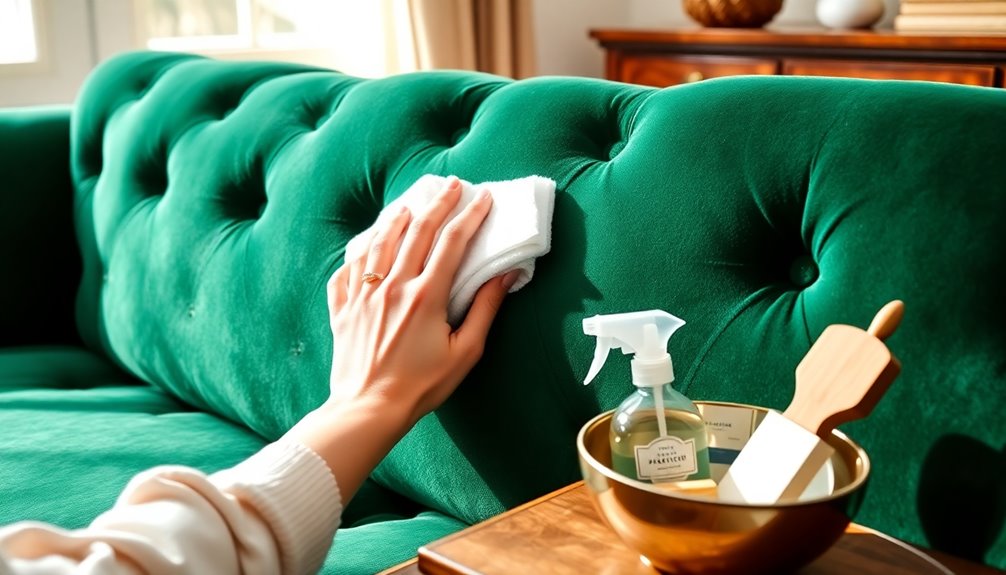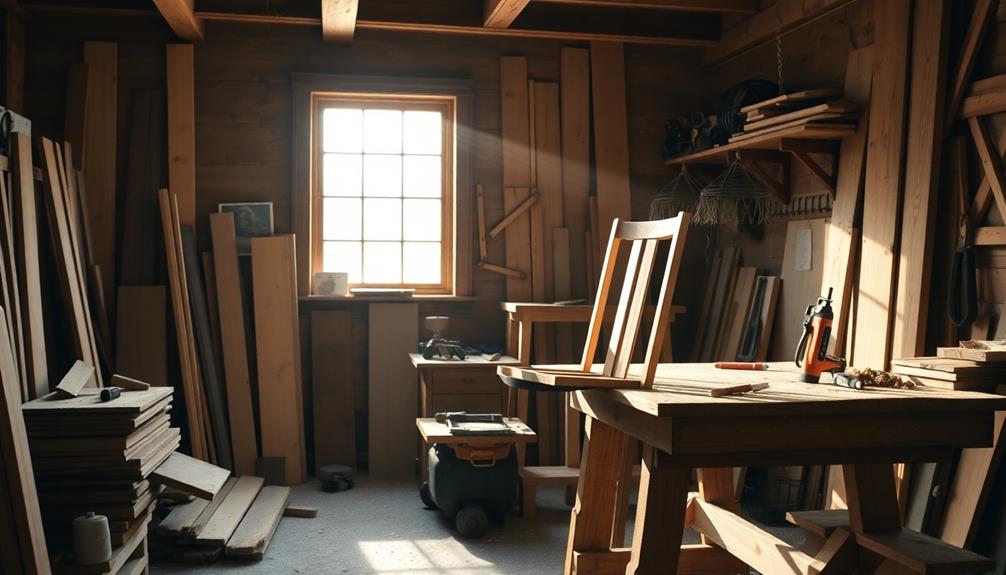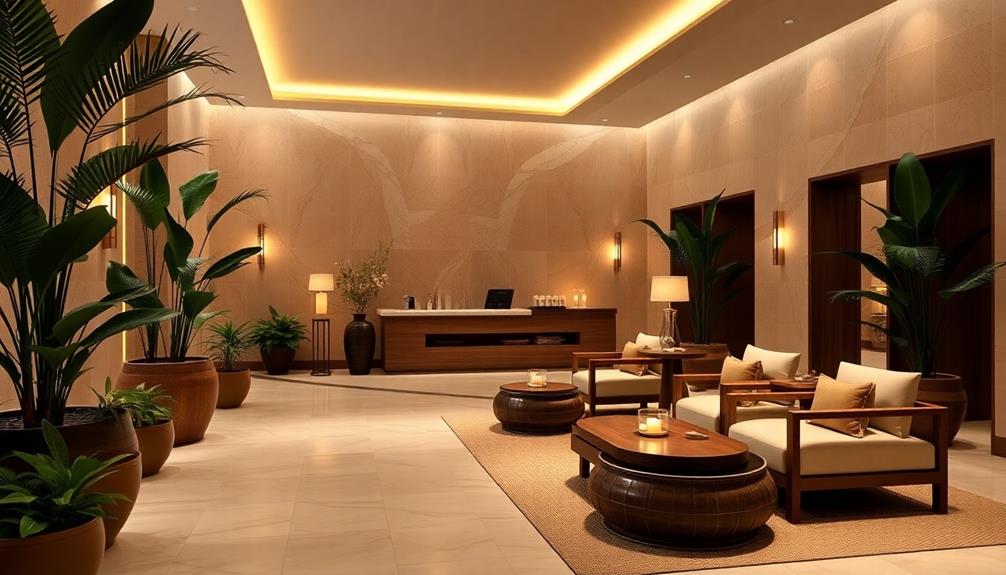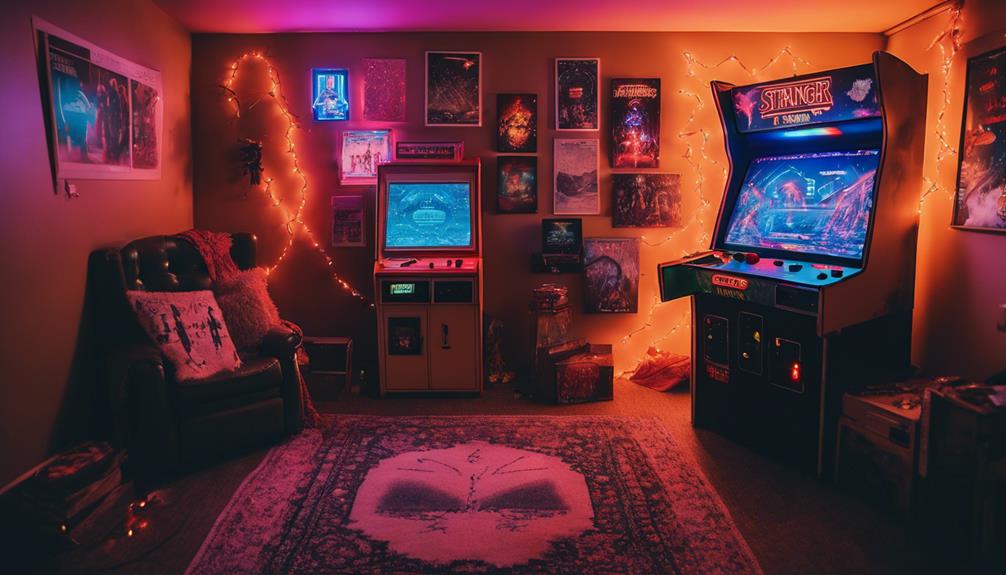Cleaning mold off furniture is straightforward if you follow a few essential steps. Start by identifying the mold type and gathering safety gear like gloves and goggles. For wood, mix equal parts vinegar and water, and gently scrub the affected area. Allow the solution to sit for about 30 minutes before drying thoroughly. For upholstery, remove visible mold with a brush or HEPA vacuum, then clean with a bleach solution or vinegar mix. Always ensure good ventilation during the process, and address moisture sources to prevent recurrence. There’s plenty more you can learn to keep your furniture mold-free. In addition to removing mold, it’s important to address other potential contaminants in your home environment. If you’re concerned about indoor air quality, you might want to explore how to eliminate formaldehyde from furniture, especially if you have recently acquired new pieces. Keeping your living space clutter-free and regularly cleaning can significantly reduce the accumulation of mold and harmful substances, ensuring a healthier atmosphere for you and your family.
Key Takeaways
- Identify and assess the extent of mold growth on furniture before starting the cleaning process.
- Wear safety gear, including gloves, goggles, and a mask, to protect against mold spores.
- Use a mixture of equal parts vinegar and water or mild detergent to clean affected surfaces.
- Scrub gently with a soft brush, allowing the solution to sit for 30 minutes before drying thoroughly.
- Maintain low humidity levels and ensure good airflow to prevent future mold growth on furniture.
Identifying Mold and Preparing
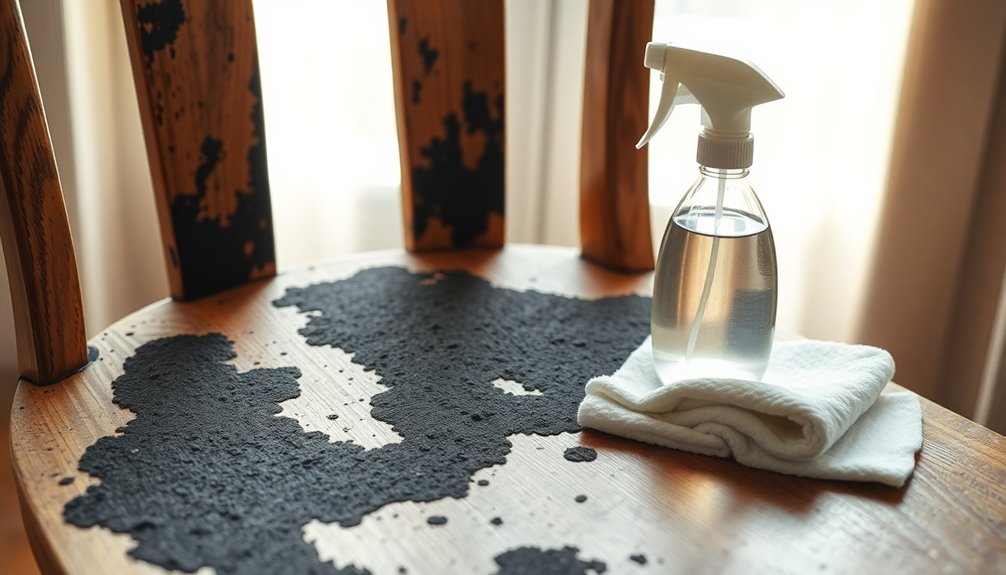
Identifying mold on your furniture and preparing for its removal is crucial for maintaining a healthy living environment. You'll want to recognize the different types of mold that can appear. Black mold, with its slimy, greenish-black appearance, often lurks on damp upholstery and poses serious health threats. Aspergillus can be gray, white, green, or black, thriving in high humidity. Penicillium usually appears bluish-green or white and grows rapidly in water-damaged areas. Alternaria has a dark green or brown velvety texture, while Cladosporium shows dark green or black spots.
Understanding the factors contributing to mold growth is essential. Excessive moisture from water damage or high humidity can create a perfect breeding ground, especially with poor air circulation and insufficient sunlight. Remember, organic materials like wood and fabric can absorb moisture, providing a feast for mold spores, which thrive in temperatures between 60 and 80 degrees Fahrenheit. Additionally, even if mold is not visible, hidden mold can still be present and may require testing to ensure complete removal.
Before tackling mold removal, assess the severity of the infestation. Collect samples for testing to identify the type and risk level. Isolate the affected furniture to prevent spores from spreading, and ensure your environment is less favorable for mold growth. Taking these steps will prepare you for effective mold removal.
Essential Tools and Materials
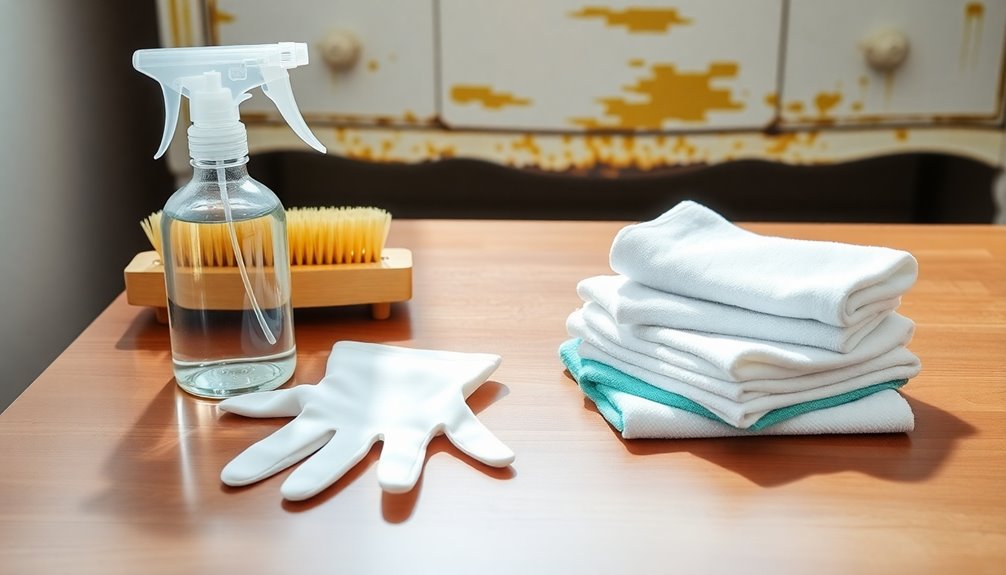
When tackling mold removal from furniture, having the right tools and materials is essential for effective cleaning and safety. Start by gathering safety gear: wear safety goggles to shield your eyes from mold spores, rubber gloves to protect your hands, and a face mask with a HEPA filter to prevent inhalation. Don't forget protective clothing to keep your skin safe. Mold can cause health issues, so it's crucial to take these precautions seriously.
Next, prepare your cleaning solutions. A mild dish detergent mixed with water works well for gentle cleaning. Alternatively, use a commercial fungicide or mold-killing cleaner according to the instructions. For tougher jobs, a bleach solution (1 cup of bleach per gallon of water) or undiluted white vinegar can be effective.
For cleaning tools, keep microfiber cloths handy for wiping away mold residue, and use a scrub brush or sponge to apply your cleaning solutions. A vacuum with a HEPA filter is crucial for capturing loose spores. Lastly, you might need sandpaper or a power sander for stubborn mold and stains.
Don't forget miscellaneous supplies like a bucket for mixing solutions, a spray bottle for application, and sealed plastic bags for disposing of vacuumed materials.
Cleaning Wood Furniture
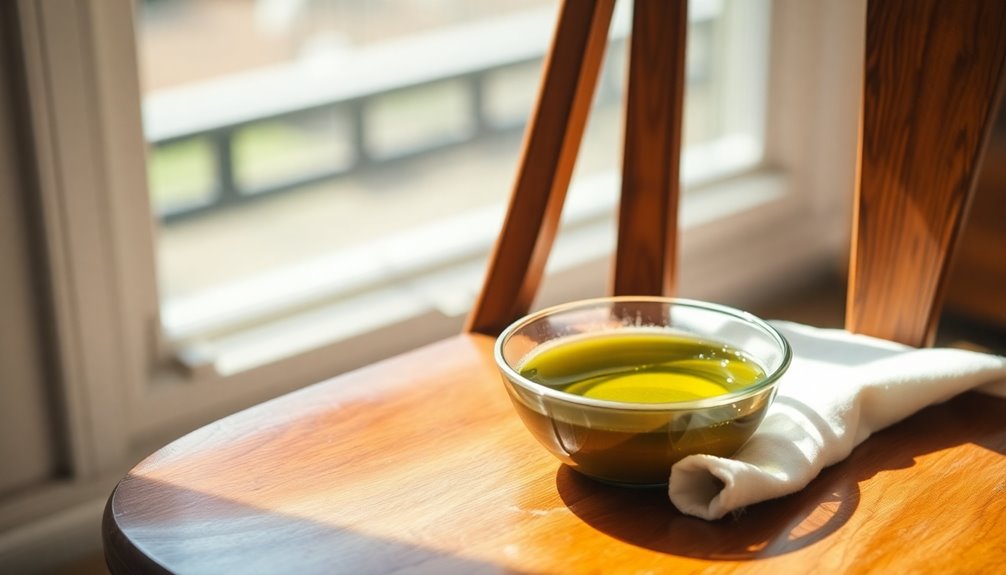
Often, mold can invade wood furniture, leaving unsightly patches and potentially damaging the finish. To tackle this issue effectively, start by ensuring your workspace is well-ventilated. Open windows and doors, and wear protective gear like gloves, a mask, and safety goggles to shield yourself from mold spores and cleaning solutions.
If possible, move the affected furniture outdoors or to a well-ventilated area. Inspect the furniture to gauge how deep the mold has penetrated. For surface mold, mix equal parts of water and white vinegar in a spray bottle for a natural cleaning solution. For stubborn patches, you can use 3% hydrogen peroxide directly on the mold or a mild detergent solution. Timely action is crucial to prevent extensive damage to mold-affected items.
Apply your chosen cleaning solution with a soft-bristled brush or sponge, being careful not to oversaturate the wood. Let the solution sit for about 30 minutes, then gently scrub the moldy areas. Wipe away the residue with a damp cloth and dry the furniture thoroughly. If mold persists, repeat the process. Finally, ensure the wood is completely dry and consider applying a mold inhibitor to prevent future growth.
Removing Mold From Upholstery
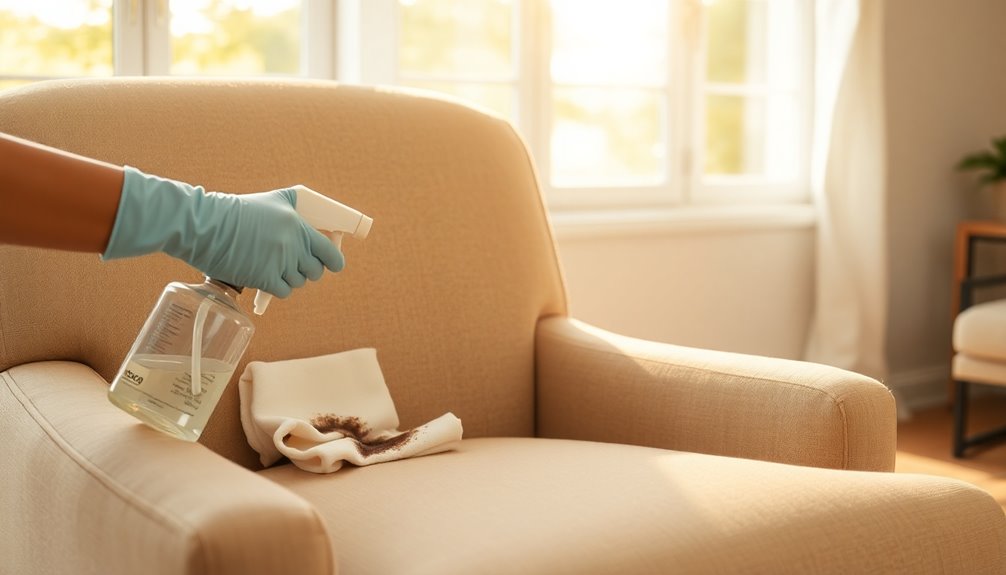
Mold on upholstery can be a frustrating problem, but you can tackle it effectively with the right approach. First, inspect the extent of the mold growth to decide if you need professional help. Protect yourself by wearing gloves, a mask, and safety goggles, and ensure the area is well-ventilated by opening windows and doors. Identify and fix any moisture sources to prevent further growth.
Start removing visible mold by using a brush or small broom to loosen patches, then vacuum the area thoroughly with a HEPA filter. Remember to discard the vacuum bag or clean the canister afterward to avoid spreading spores. For cleaning, mix a solution of 8 oz bleach, 2 oz laundry detergent, and 1 gallon of water, or use equal parts water and white vinegar as a natural antifungal. Lightly spray the solution onto the affected area without soaking it. Mold thrives on dirt and moisture, so keeping your upholstery clean and dry is essential to prevention.
After cleaning, allow the fabric to air dry in a well-ventilated space or direct sunlight. Rinse the area with a clean, damp cloth to remove any residue, and regularly check your upholstery to prevent future mold growth.
Alternative Cleaning Techniques
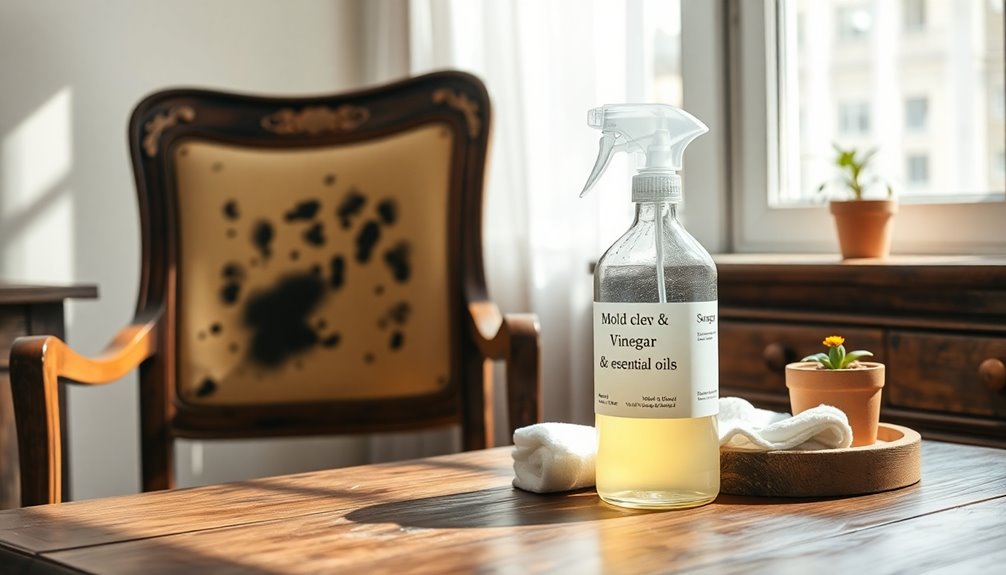
There are several effective alternative cleaning techniques you can use to tackle mold on furniture. One of the simplest methods involves using white vinegar. Fill a spray bottle with undiluted vinegar or a mix of equal parts vinegar and water, spray it on the moldy area, let it sit for at least an hour, then wipe with a damp cloth and allow it to air dry.
Baking soda also works wonders. Mix a teaspoon with water to create a paste, apply it to the area with a soft brush, let it sit for 15-20 minutes, and rinse with a damp cloth. If you have carbonated water, spray it on the affected area, scrub with a clean cloth, and wipe it away.
For a stronger solution, mix hydrogen peroxide with water in a spray bottle, spray it on the mold, let it sit for about 10 minutes, then wipe it clean. Rubbing alcohol can be used similarly—mix equal parts with water, apply, and wipe after a few minutes. It is important to note that mold thrives in areas with high humidity, so ensure you address any underlying moisture issues in addition to cleaning.
Lastly, consider eco-friendly options like MOLD*OFF or a clove oil and salt paste, applying them according to their instructions for effective results.
Ensuring Safety During Cleaning
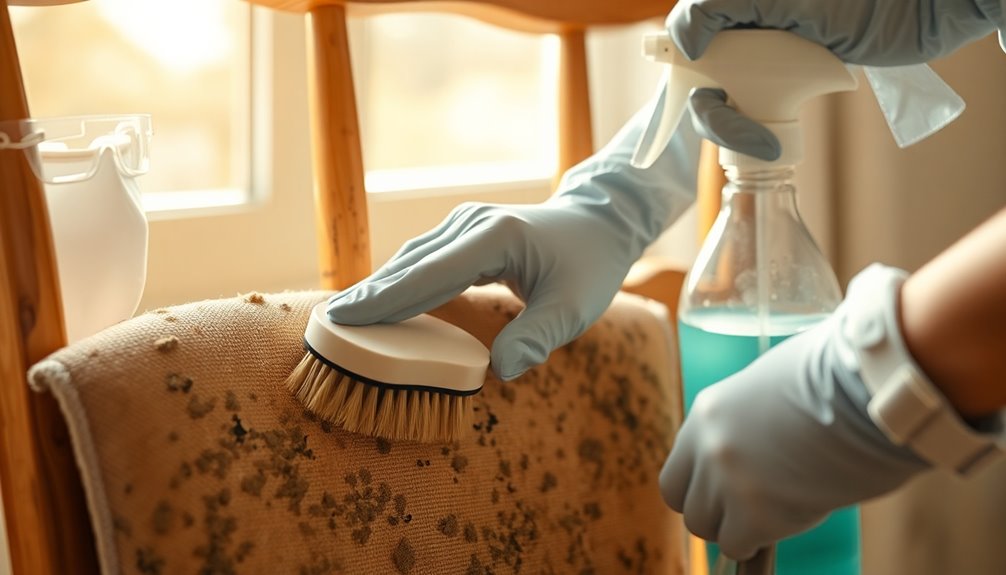
When tackling mold on furniture, ensuring your safety should be a top priority. Start by isolating the cleanup area to keep unprotected individuals away. Close off the space to prevent mold spores from spreading to other rooms, using plastic sheets or tarps if necessary. Make sure the area is well-ventilated, but avoid running fans that could disperse spores.
Next, equip yourself properly. Wear a NIOSH-approved N95 respirator or a full-face respirator for extensive work. Use non-latex, vinyl, or nitrile gloves to protect your skin, and wear safety goggles to shield your eyes from spores. Protective footwear and clothing, like Tyvek® or Tychem® garments, are essential depending on the severity of the mold. Proper protective apparel is crucial to minimize exposure during cleanup activities.
Avoid direct contact with mold by not touching it with bare hands. Be careful when inspecting behind wall coverings to minimize spore release. Use a HEPA vacuum to remove loose spores before cleaning, ensuring that your methods don't disperse spores into the air. Lastly, dispose of any damaged materials in sealed plastic bags to prevent further contamination.
Preventing Future Mold Growth
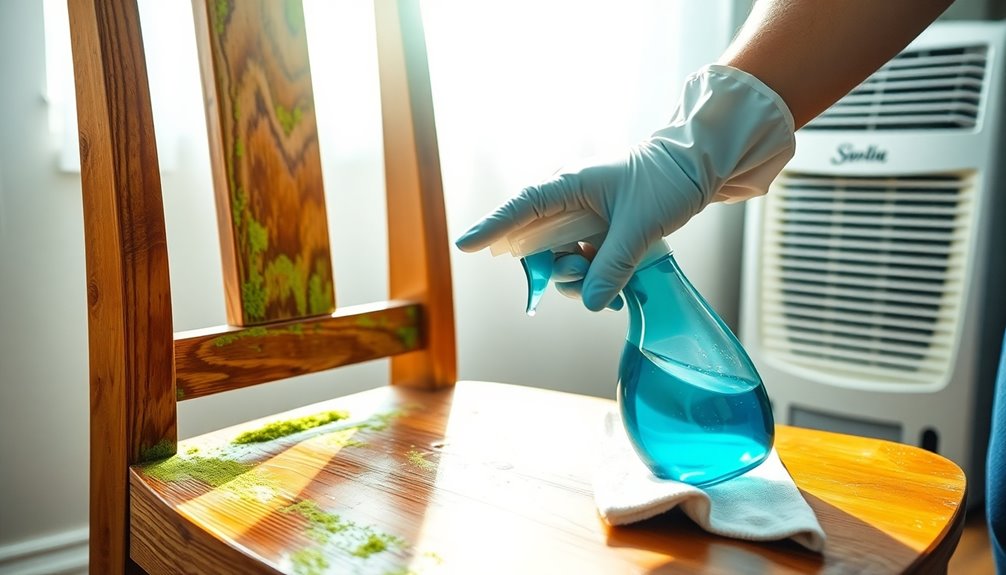
Preventing future mold growth is essential for maintaining a healthy living environment. Start by keeping humidity levels between 30% and 50%. You can use dehumidifiers and regularly monitor humidity, especially in damp areas like bathrooms and kitchens. Avoid placing furniture in basements or other high-humidity zones.
Air circulation plays a crucial role too. Move furniture away from walls to promote airflow, and consider using fans to increase circulation around pieces. Open windows and doors to let fresh air in, and ensure good ventilation in closets and basements.
Address water damage promptly by wiping up spills immediately and repairing any leaks. Regularly inspect your furniture for signs of moisture and use waterproof coatings on wooden pieces to protect against dampness. This is particularly important as poor air circulation can trap moisture, fostering mold growth.
Regular cleaning and maintenance are key. Wipe down wooden furniture with a dry cloth to remove dust and potential mold spores. Inspect surfaces for mold and apply varnish or sealant to create a moisture barrier. Lastly, expose furniture to direct sunlight when possible to help dry out any moisture and inhibit mold growth.
Maintaining a Healthy Environment
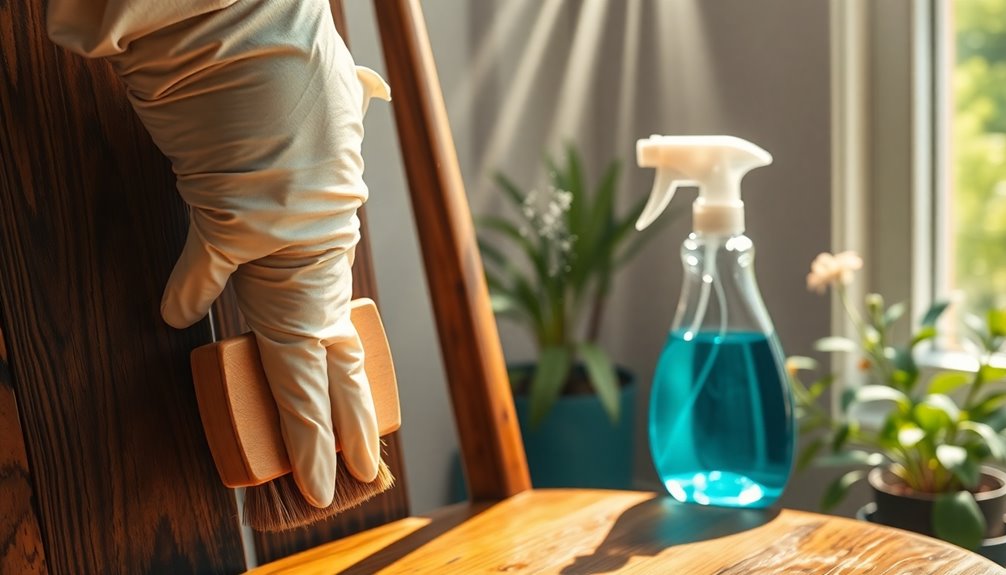
Maintaining a healthy environment is crucial for both your well-being and the longevity of your furniture. Start by isolating the cleanup area when you detect mold. Close off the space to prevent mold spores from spreading, using plastic sheets or tarps if necessary. Ensure good ventilation in this area to minimize spore dispersion, and keep it free of debris to avoid further contamination.
Protect yourself by wearing appropriate gear. Use a respirator or face mask to avoid inhaling spores, along with gloves to prevent skin contact. Safety glasses will shield your eyes, and long-sleeved clothing will cover your skin. Also, consider protective footwear to keep spores from sticking to your shoes. Additionally, using dehumidifiers to lower humidity levels can significantly help in the prevention of mold growth.
Be cautious during the cleanup. Avoid direct contact with mold and refrain from breathing in spores. When checking behind wallpaper or other coverings, do so gently to prevent releasing more spores. Use a HEPA vacuum for cleaning surfaces, as it helps contain the spores instead of scattering them.
Finally, dispose of any damaged materials properly and never paint over mold. Instead, clean surfaces thoroughly and allow them to air dry completely. This approach helps maintain a healthier living environment.
Frequently Asked Questions
Can I Use Essential Oils to Clean Mold?
Yes, you can use essential oils to clean mold. Oils like tea tree, clove bud, and eucalyptus are effective due to their antimicrobial properties. You can mix them with vinegar or water in a spray bottle for easy application. Just apply a few drops directly to the moldy area or create a scrubbing paste with baking soda. Remember to wear protective gear and ensure the area is dry afterward to prevent mold from returning.
How Do I Know if Mold Is Toxic?
To know if mold is toxic, look for dark spots, a fuzzy texture, and water stains, which may indicate growth. Pay attention to strong musty odors in damp areas; they often signal mold presence. Monitor your health for symptoms like coughing, sneezing, or fatigue, as these can result from exposure. If you suspect mold, it's best to consult a professional for proper identification and advice on handling it safely.
Is It Safe to Clean Mold While Pregnant?
It's not safe to clean mold while you're pregnant. Increased exposure to mold spores can lead to respiratory issues and heightened allergic reactions, which can be more severe during pregnancy. Your immune system is compromised, making you more susceptible to infections. Additionally, mold exposure might pose risks to fetal development. It's best to avoid direct contact and hire professionals for mold remediation to ensure your safety and that of your baby.
Can I Wash Moldy Furniture in a Washing Machine?
You can't wash moldy furniture in a washing machine. Furniture is typically too large and made of materials that don't withstand the machine's cycles. Instead, use gentle cleaning products and soft cloths to wipe surfaces. For upholstery, vacuum and spot clean stains. Always check the manufacturer's instructions and ensure proper ventilation while cleaning. Taking these precautions helps prevent damage and keeps your furniture looking its best.
What Should I Do if Mold Returns After Cleaning?
If mold returns after cleaning, you need to take immediate action. First, identify the source of moisture and fix any leaks or spills. Increase air circulation by using fans and moving furniture. Keep humidity levels between 30% and 50% with dehumidifiers. Regularly inspect for dampness and clean surfaces to remove dust. Finally, consider applying moisture-resistant coatings to protect your furniture from future mold growth. Stay vigilant to prevent recurrence!
Conclusion
In conclusion, tackling mold on your furniture doesn't have to be overwhelming. By identifying the mold, gathering the right tools, and following the proper cleaning techniques, you can restore your pieces effectively. Remember to prioritize safety and take preventive measures to keep mold from returning. With a little effort, you can maintain a healthy environment in your home. Don't let mold take over—take action and enjoy your clean, fresh living space!
